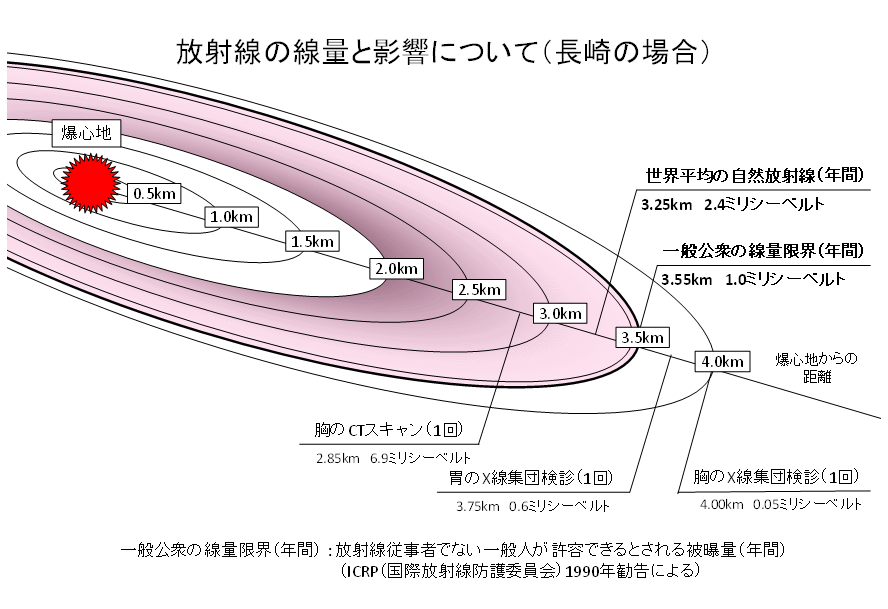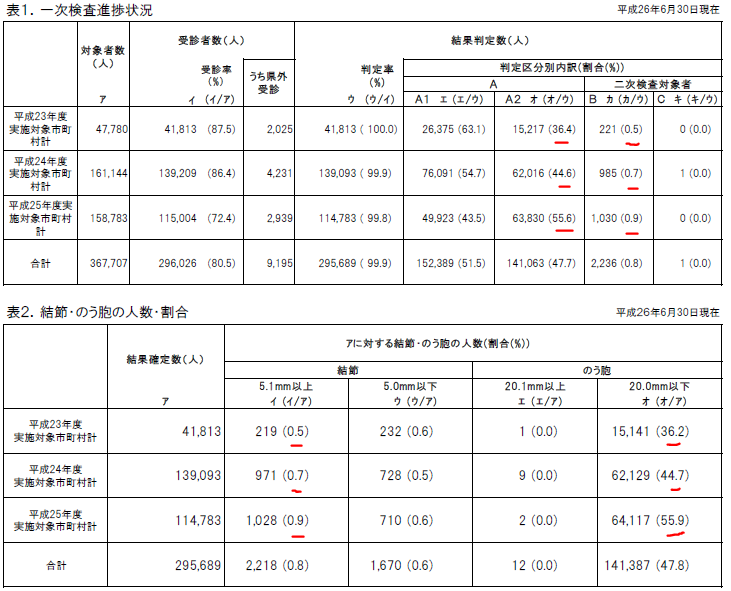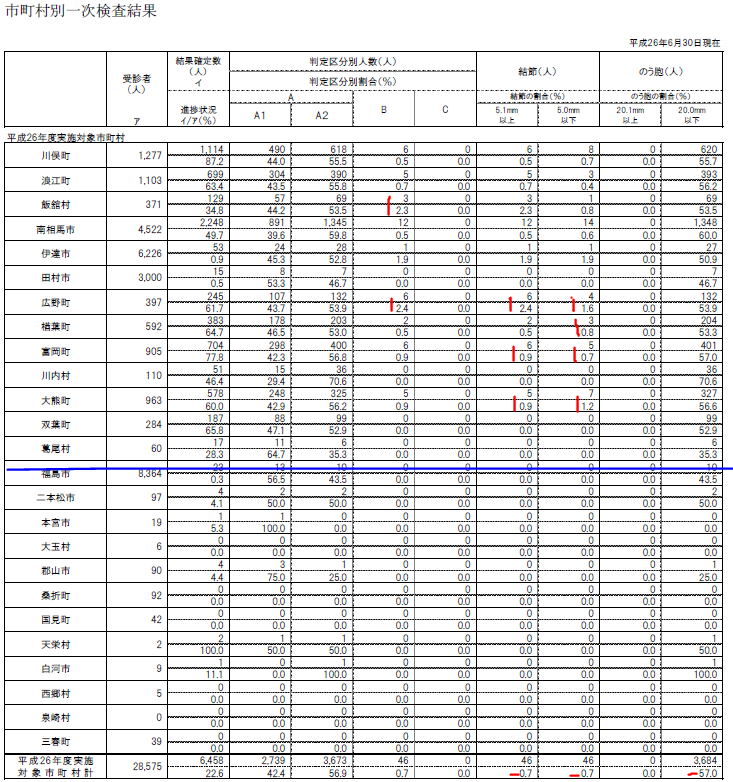大川原有重の日記
この世を去るとき、自分の生涯を振り返って、「人を傷つけずにすんだ」と思えればいい(ある哲人の言葉)
« 2014年9 月 | メイン | 2014年11 月 »
2014年10 月
2014/10/31
学習
福島第一にあるウラン燃料の量って!? 2466t 広島型原爆の1233倍、チェルノブイリ 19倍
※大変申し訳ございませんでした。チェルノブイリ 224倍と書いておりましたが、計算ミスで19倍が正しい数字です。途中計算の単純なミスでした。今後、こういうことがないように注意いたします。
但し、言いたいこはまったく変わっておりません。
これは単なる数字であって、被害の大きさを表すものではない。
しかし、
ウランの総量 = 放射能物質の総量
これもまた事実である。
因みに、広島型原爆にウラン235の量は約60kgであり、
福島第一原子力発電所の二酸化ウラン量 2466tがある。
(二酸化ウラン量 2466tは、福島第一原子力発電所の二酸化ウラン量の計算から導いたあくまで概算である。)
二酸化ウランの中で原爆に使われたウラン235は、ペレットに2~4%が含まれている。
仮に、ペレットに含まれる(3%として)ウラン235のみを比較しても74tも存在することになる
ウラン235の量 74t÷ 60kg = 1233倍
ウラン235のみ比較で、広島型原爆の1233倍のウラン235の存在が判る。
ウラン235も、ウラン238も同じウランであり、同じエネルギーを持っている。
違うのは元素としての安定性であり、単純にウラン238の方が安定しており、ウラン238は核分裂反応の減速材として機能する。
しかし、
高速中性子にさらされると核分裂反応が起こり、崩壊物質を放出しながら核分裂の過程でプルトニウム239へと変わってゆくのである。
プルトニウムは高熱にさらされて溶け出すと、放射能物質を撒き散らしながら自らも粒子とガスになって拡散する。
半減期という放射能が低くなるのは敢えて言わないでおこう。
言うだけ無駄である。
それほど長い期間を必要とする。
下の使用済み燃料は、ウランからプルトニウムに変化しているので、燃えるエネルギーよりもプルトニウムの拡散という意味でトンでもなく恐ろしいモノである。
半永久的に放射能が下がらない地域が東北・関東一帯に生まれる可能性があることだけは心に止めて貰いたい。
放射能の量で住める地域と住めない地域が生まれ、それがどうなるかは事故の規模で変わってくる。
『神のみぞ知る』
どこかの大臣が言ったが、あながち間違っていない。
だからこそ、「原子炉を終息させなければならない」と何度も叫んでいる。
広島型原爆の4万倍以上のエネルギーがそこに存在し、数千倍以上の放射性物質を撒き散らす可能性がそこにある。
チェルノブイリ原子力発電所事故と比較するなら
(事故が起こった4号炉は福島の6号炉と同じ程度の電力を供給できることから同程度のウラン使用量と推定すると、福島の6号炉に使用してる二酸化ウランの量は 132tとする。)
福島第一の総二酸化ウラン量÷チェルノブイリ4号炉の二酸化ウラン量
2466t ÷ 132t = 19倍
つまり、チェルノブイリ原子力発電所事故が子供のいたずら程度の事故であったと思わせるほどの未曾有の危機の可能性があるのだ。
本当の被害は予測できない。
『神のみぞ知る世界』
そんな予測できない未来より、終息させた安心した世界を手に入れたいものである。
とにかく、冷やすこと。水を注ぎ続けること。原子炉の温度を上げさせないこと。
これを1番に考えないとトンでもない事態になる。
現政権は放射能を拡散させない為に、原子炉の温度が上がることを容認している。
とても気険な考え方だ。
私見を言わせてもらうならば、
今拡散している汚染水などは土木工事の技術を駆使すれば、拡散を防ぐ方法はある。
私以外にも多くの方々がアイデアを出している。
問題は決断して、即実行できない運用面に問題があるのだ。
ハード(技術)に問題があるのではなく、ソフト(官邸)に問題がある。
------------------○------------------
福島第一原子力発電所の二酸化ウラン量の計算
使用
状況 済 新 原子炉内
1号機 292本、100本 400本
2号機 587本、 28本 548本
3号機 514本、 52本 548本(MOX燃料)
4号機 1331本、204本 0本
5号機 946本、 48本 548本
6号機 876本 64本 764本
合計 4546本 496本 2808本 総本数 7852本
共用プール 約6400本
福島第一内の総本数 約14252本
燃料棒1本当たりの二酸化ウラン量 173kg/本
福島第一原子力発電所に存在する二酸化ウラン量は、約2466t になる。
(6号機の二酸化ウラン量 764本×173kg/本=132172kg)
(下の参考資料よりまとめました。)
------------------○------------------
福島第一原子力発電所
http://ja.wikipedia.org/wiki/%E7%A6%8F%E5%B3%B6%E7%AC%AC%E4%B8%80%E5%8E%9F%E5%AD%90%E5%8A%9B%E7%99%BA%E9%9B%BB%E6%89%80
1号機:二酸化ウラン 約69t/年
2号機:二酸化ウラン 約94t/年
3号機:MOX燃料 約94t/年
4号機:二酸化ウラン 約94t/年
5号機:二酸化ウラン 約94t/年
1号機
ウラン装荷量(t) 69
燃料集合体(本) 400
2~5号機
ウラン装荷量(t) 94
燃料集合体(本) 548
6号機
ウラン装荷量(t) 132
燃料集合体(本) 764
燃料棒1本当たりの二酸化ウラン量 173kg/本
------------------○------------------
「建屋と別にさらに6400本」 使用済核燃料めぐり読売報道
http://www.j-cast.com/2011/03/18090770.html
2011/3/18 10:06
6基の原子炉建屋内の貯蔵プールとは別に、約6400本の使用済核燃料を貯蔵した共用プールがある。
1号機 292本、
2号機 587本、
3号機 514本、
4号機 1331本、
5号機 946本、
6号機 876本
合計 4546本
共用プール 約6400本
総計1万950本程度
---------○---------
福島第一原子力発電所等の事故概況
http://www.hattori-ryoichi.gr.jp/blog/%E7%A6%8F%E5%B3%B6%E7%AC%AC%E4%B8%80%E5%8E%9F%E7%99%BA%E6%A6%82%E6%B3%81%2308.pdf
---------○---------
沸騰水型原子炉に用いられる8行8列型の燃料集合体について
http://www.nsc.go.jp/shinsashishin/pdf/1/ho019.pdf
集合体ウラン重量(㎏) 約184㎏、約187~195㎏
平均ウラン濃縮度(%) 2.62%、 2.1~2.5%
---------○---------
福島第一原子力発電所 MOX燃料の長期保管
http://www.pref.fukushima.jp/nuclear/info/pdf_files/100805-5.pdf
---------○---------
二酸化ウラン
http://ja.wikipedia.org/wiki/%E4%BA%8C%E9%85%B8%E5%8C%96%E3%82%A6%E3%83%A9%E3%83%B3
---------○---------
天然ウラン
http://ja.wikipedia.org/wiki/%E5%A4%A9%E7%84%B6%E3%82%A6%E3%83%A9%E3%83%B3
---------○---------
ウラン238
http://ja.wikipedia.org/wiki/%E3%82%A6%E3%83%A9%E3%83%B3238
---------○---------
プルトニウム
http://ja.wikipedia.org/wiki/%E3%83%97%E3%83%AB%E3%83%88%E3%83%8B%E3%82%A6%E3%83%A0
---------○---------
核燃料サイクルって何?
http://www.geocities.jp/tobosaku/kouza/cycle.html
---------○---------
チェルノブイリ原子力発電所事故
http://ja.wikipedia.org/wiki/%E3%83%81%E3%82%A7%E3%83%AB%E3%83%8E%E3%83%96%E3%82%A4%E3%83%AA%E5%8E%9F%E5%AD%90%E5%8A%9B%E7%99%BA%E9%9B%BB%E6%89%80%E4%BA%8B%E6%95%85
1986年には人類史上最悪の原子力事故であるチェルノブイリ原子力発電所事故が発生。
--------○---------
チェルノブイリ原子力発電所
http://ja.wikipedia.org/wiki/%E3%83%81%E3%82%A7%E3%83%AB%E3%83%8E%E3%83%96%E3%82%A4%E3%83%AA%E5%8E%9F%E5%AD%90%E5%8A%9B%E7%99%BA%E9%9B%BB%E6%89%80
発電所の建設は1970年代に始まり、1977年に1号炉が竣工し、翌1978年に2号炉、1981年に3号炉、そして1983年に4号炉が竣工した。 さらに、それぞれ1GWを発電することができる5号炉と6号炉の2つの原子炉が、その事故の時に建設中だった。これら4つのプラントはRBMK-1000型である。また、4号炉の事故が起こらなければ、世界一になる予定であった。
4つの炉は、それぞれ電気出力1GWe (熱出力3.2GWth)を発電でき、合計でソ連の原子力発電量の15%、ハンガリーへのエネルギー輸出の80%を占めていた。4号炉は、ウクライナの電力のおよそ10%を生産していた。
(1GWe = 100万kw)
--------○---------
記録
U.S. EMBASSY SCIENCE FELLOWS SUPPORT TO JAPAN:
OBSERVATIONS AND COMMENTARY ON REMEDIATION OF THE AREAS OFF-SITE FROM THE FUKUSHIMA DAIICHI REACTORS
INTRODUCTION
Following the Tōhoku earthquake and tsunami on March 11, 2011, Japan’s Daiichi nuclear power plant suffered damages resulting in the release of radiological contamination. This release is the largest nuclear disaster since the Chernobyl disaster of 1986 and only the second disaster (along with Chernobyl) to be rated Level 7 (the highest level) for safety significance on the logarithmic International Nuclear Event Scale.1
Japan was profoundly impacted. The radioactive material settled around the Daiichi plant and caused major contamination over large areas of the Fukushima Prefecture. The contamination level (predominantly Cs-137 and Cs-134) was high enough to require decontamination of the surrounding areas to protect human health and the environment. Fourteen nearby cities were evacuated (Figure 1 right picture), and more than 100 cities beyond those will require remediation (Figure 1 left picture).
The Government of Japan (GOJ) has been facing the enormous challenge to remediate areas affected by the nuclear incident and has charged its Ministry of the Environment (MOE) with the off-site remediation under the Act on Special Measures. The Ministry has been pursuing various
Figure 11. Status of the evacuated areas,, featuring new evacuation zones to be formed after reorganization of restricted zones on April 2, 2013.
programs to assess the radiation exposure of the population in the contaminated areas and to effectively decontaminate these areas.
EMBASSY SCIENCE FELLOWS
At the request of the MOE, the U.S. Department of State, through its Embassy Science Fellow (ESF) Program, provided assistance to the GOJ through subject matter experts in radiological decontamination, one from the U.S. Environmental Protection Agency (EPA) and two from the U.S. Department of Energy (DOE) national laboratories. The SMEs provided recommendations on the continued GOJ’s off-site remediation activities. The fellows are Dr. Sang Don Lee from EPA, Dr. Robert Sindelar from Savannah River National Laboratory and Mark Triplett from Pacific Northwest National Laboratory. The ESF mission period was February 4 through March 29, 2013. As a team, the ESFs collected resources (e.g., strategic plan, technical reports, policies) relevant to the GOJ’s remediation efforts by meeting with national and local government officials, visiting remediation sites, and meeting with primary decontamination contractors.
The ESF team assessed the organizational systems (used for planning, execution, and regulation of the cleanup), the details of technology application and the details of the decontamination field practices.
They observed that the MOE was adapting to the unprecedented wide-area nuclear incident and vigorously pursuing remediation of the contaminated areas to expedite return of the impacted area to the people, including:
-
rapidly mobilizing resources to respond;
-
seeking, developing, testing, and applying innovative decontamination methods;
-
enabling local communities to have a strong role in forming decontamination plans and in
siting waste storage facilities;
-
providing public education materials regarding the radiation risks and the status of
decontamination efforts;
-
establishing open communication with the prefectural and municipal governments and with
citizens regarding decontamination activities; and
engaging the international community to find the best solutions for remediation.
To accomplish their mission, the ESF team drew upon their experience with large-scale DOE and EPA projects to provide information, lessons learned, and suggestions of technologies that might benefit the remediation activities in Japan. The team, through collaboration and coordination with other US government employees developed a framework for remediation of a cesium-contaminated populated
Figure 2. Program Elements for an Environmental Remediation System for a Populated Region Contaminated by Cesium
2
region from a total systems perspective, as shown in Figure 2. Information gathered and evaluated by the team was categorized into each of these elements. The gaps and needs addressed by this work offered a novel and more in-depth perspective on Japan’s current activities related to the radioactive incident and also leads to enhanced preparedness for such incidents within the U.S. MORE INFORMATION
The observations and recommendations of the ESF team are documented in a report entitled, Report of the United States Embassy Science Fellows Support to the Government of Japan – Ministry of The Environment, Observations and Commentary on Remediation of The Lands Off- Site From the Fukushima Daiichi Reactors, July 2013, Washington DC: U.S. Environmental Protection Agency. SRNL-RP-2013-00303. EPA/600/R-13/135. http://josen.env.go.jp/en/documents/pdf/workshop_july_17-18_2013_04.pdf
Chapter 1 of the report summarizes the: (1) extent of initial contamination, (2) status of the decontamination activities and (3) program elements of an environmental remediation system for a populated land with cesium contamination.
Chapters 2 through 8 describe the observations of the ESF team with respect to the environmental remediation program elements and offer both general and specific recommendations for improvements within the remediation program elements.
CONTACT INFORMATION
For more information, visit the EPA Web site at www.epa.gov/nhsrc. Technical Contact: Sang Don Lee (lee.sangdon@epa.gov) General Feedback/Questions: Kathy Nickel (nickel.kathy@epa.gov)
REFERENCES
"Fukushima accident upgraded to severity level 7". IEEE Spectrum. April 12, 2011.
記録
 by mak_55 ↓ 放射線と藍藻マップ↓
=========== (C) 2010~2014 mak55 All Rights Reserved. 掲載の記事・写真・図・イラストなど、すべてのコンテンツの無断複写・転載を禁じます。 最新の記事
|
   |



